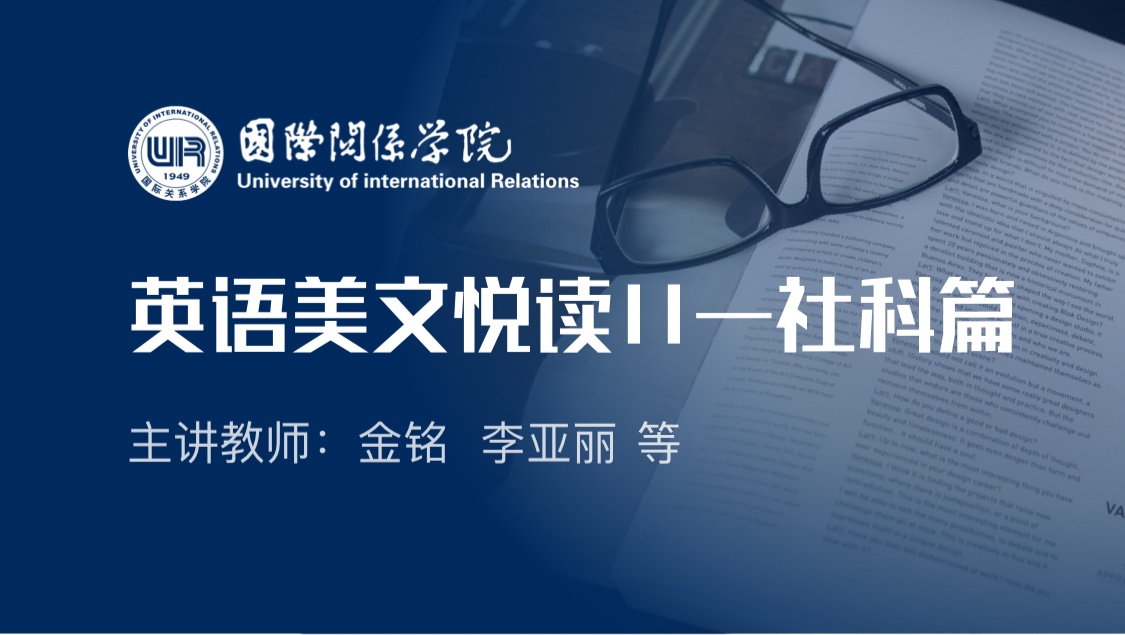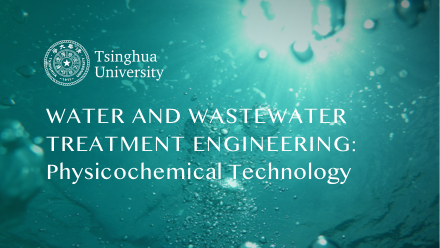
当前课程知识点:Water and Wastewater Treatment Engineering: Physicochemical Technology > Chapter 2 Sedimentation and clarification > 2-2 Discrete particle settling > 2-2 Discrete particle settling
返回《Water and Wastewater Treatment Engineering: Physicochemical Technology》慕课在线视频课程列表
返回《Water and Wastewater Treatment Engineering: Physicochemical Technology》慕课在线视频列表
同学们好,在今天这一讲
我们介绍沉淀与澄清的第2节自由沉淀
我们首先来看一下,颗粒在自由沉淀中的沉淀过程
在自由沉淀中我们讨论的对象是低浓度的离散颗粒,如砂砾,铁屑等
假设沉淀颗粒是球形颗粒,粒径为dp
在沉淀过程中,颗粒的大小、形状和密度均不发生改变,水处于静止状态
如果颗粒在水中开始沉淀,就会受到三个力的作用
第一是重力,第二是水的浮力,第三是流体阻力
这三种力可以通过这三个公式进行计算
其中,u为颗粒与流体之间的相对运动速度
Ap为颗粒在垂直于运动方向水平面的投影面积,C_D为阻力系数
在开始沉淀后,经过一个很短的时间
作用于颗粒的重力、浮力和阻力就会达到平衡,颗粒开始匀速下沉
经整理我们得到颗粒沉速的基本计算公式,如这个公式所示
从这个式子可以看到,要计算颗粒沉速,必须要知道阻力系数C_D
而阻力系数C_D又如何计算呢?
它与颗粒的雷诺数Re有关,通常由实验确定
对于球形颗粒,阻力系数与雷诺数的关系如这个曲线所示
根据雷诺数的大小,可以分成几个区域来进行阻力系数的计算
首先是层流区,即颗粒的雷诺数小于1时,阻力系数等于24/Re
把它带入颗粒沉速的基本计算公式
就可以得到经典的Stokes公式
即颗粒的沉淀速度等于1/18乘上颗粒与水的密度差ρ_p-ρ
再除以水的动力粘度,然后再乘上重力加速度和颗粒粒径的平方
如果雷诺数比较大,大于10的3次方,就进入到湍流区
阻力系数是一个恒定的值,为0.44
如果处于层流和湍流之间的过渡区,阻力系数的计算比较复杂
可以通过这个公式来进行计算
我们如果得到了水流阻力系数的计算方法
我们就可以计算出颗粒的沉速
但由于在阻力系数计算过程中
需要事先假设颗粒的沉速处于哪个区域
因此在得到颗粒沉速计算结果以后还需要对Re,即雷诺数,进行校核
以确定颗粒沉速计算中阻力系数公式采用的合理性
那么颗粒的沉速计算式,以层流状态下的Stokes公式为例
究竟有何物理意义呢?
从这个式子首先我们可以了解影响颗粒沉速的因素
比如颗粒的粒径、颗粒与水的密度差等
第二我们可以通过这个式子
在已知的颗粒粒径条件下求得颗粒沉淀速度
第三我们可以由颗粒沉淀速度反推颗粒粒径
在水处理中,可以通过沉淀实验求出颗粒的沉淀速度进而求出颗粒的粒径
另外我们也可以由颗粒的沉降速度来求液体的粘度
这就是利用落球法来测定粘度的原理
在了解了自由沉淀过程以后,下面我们介绍颗粒沉淀实验
在实际的水处理中,通常待沉淀的颗粒粒径分布我们是不知道的
我们很难直接计算出颗粒的沉淀速度
因此,通常我们需要通过沉淀实验来求得
下面我们来介绍一下沉淀的实验装置
如这个图所示,沉淀装置主要是由沉淀柱组成
在沉淀柱的不同高度设有取样管
水箱装有待沉淀的实验水样
通过泵把水样打入到沉淀柱中
我们就可以开始做沉淀实验了
假设沉淀柱有效水深为H
沉淀柱内含有不同大小的悬浮颗粒
并且在沉淀柱深度方向是均匀分布的
这里为了简单起见,我们假设在沉淀柱中只含有三种不同大小的颗粒
即大、中、小三种颗粒
在刚开始沉淀时,也就是沉淀时间t等于0时
这三种颗粒在沉淀柱中不同高度上是均匀分布的,总的悬浮物浓度为C0
我们来看看沉淀开始后,在某一个时刻ti时,三种颗粒的沉淀情况
首先是最大的颗粒,沉淀速度比较快
我们假设这种颗粒在沉淀时间ti时
正好全部都沉淀通过了底部的取样口
到达沉淀柱的底部,也就是全部被去除了
而中等颗粒的沉淀速度小于大颗粒的沉淀速度
因此只有部分颗粒通过了底部的取样口,到达了沉淀柱的底部
尚有部分颗粒残留在沉淀柱中
中等颗粒的沉淀去除比例与沉淀柱上部该颗粒移动的距离成正比
小的颗粒沉淀速度慢
在沉淀时间ti时只有少部分颗粒通过底部取样口沉淀到沉淀柱底部
而大部分颗粒仍然残留在沉淀柱中
沉淀去除比例同样也与沉淀柱上部该颗粒移动的距离成正比
此时我们从底部取样口进行取样
测得水样中的悬浮物浓度为Ci
由于大颗粒在这个时间点已经全部通过了底部取样口
因此,该浓度只包括中颗粒和小颗粒的浓度
也就是代表了残余颗粒的浓度
然后我们计算此时的颗粒沉淀速度ui
等于沉淀柱的有效高度H除以时间ti
如果某一颗粒的沉速大于ui,则表示在沉淀时间ti时
全部沉淀到了底部
而某一颗粒的沉速等于ui,则表示该颗粒在沉地时间ti时
正好从顶部沉淀到底部
因此凡是沉速大于等于ui的颗粒
就会全部被去除
而对于沉速小于ui的颗粒
只能部分沉淀到沉淀柱的底部
那么这部分颗粒占全部颗粒的比例
也就是说残余颗粒的百分数pi,有多大呢?
pi等于Ci除以C0
这样我们就可以绘制残余颗粒百分数p和颗粒沉速ui之间的关系曲线
如这个图所示
由于颗粒沉速与颗粒粒径有关
所以这个曲线也可以称为颗粒粒径的分布曲线
从这个图中,我们可以从任意一个沉速找到相应的残余颗粒的百分数pi
在这个实验结果基础上
我们可以进一步计算在某一个沉淀时间t0时颗粒的总去除率P
此时颗粒的沉速为u0,相应的残余颗粒比例为p0
颗粒总去除率P包括两部分
第一部分是沉速大于等于u0颗粒的全部去除率,P1等于1-p0
第二部分是沉速小于u0颗粒的部分去除率,P2
而这部分该如何计算呢?
我们来看下这个图
对于在某一沉淀时间t0,沉速为ui的颗粒的沉淀距离为hi
因此其去除的比例为hi/H
沉淀距离hi等于ui乘以t0
同时沉淀柱高度H等于颗粒沉速u0乘以t0
最后沉速小于u0颗粒的去除比例等于该颗粒的沉速ui与u0的比值
水中所有沉速小于u0颗粒的去除率的总和
可以利用这个残余颗粒百分数和沉速的关系曲线进行计算
也就是曲线中阴影部分的面积,可利用图解积分法确定
我们可以进一步考察颗粒总去除率与沉淀时间的关系
呈现出这样一个曲线关系
沉淀时间与水深有关
如果把沉淀时间转换成沉速
我们就得到颗粒总去除率与沉速的关系曲线
由于是自由沉淀,在沉淀过程中
颗粒沉速随沉淀柱高度不发生变化
因此颗粒总去除率和颗粒沉速之间的关系曲线与水深无关
自由沉淀这一重要特征为我们的沉淀实验提供了很大的方便
也就是说,我们可以采用某一高度的沉淀柱来进行实验
得到的颗粒总去除率和颗粒沉速的关系曲线
可以用于任何不同高度沉淀柱条件下的颗粒总去除率的计算
刚才介绍的基于底部取样法的颗粒沉淀去除率的计算
同学们可以看到这个过程还是比较复杂的
其中还涉及到了积分计算
下面我们介绍一种比较简单的颗粒沉淀去除率的实验和计算方法
即中部取样法
中部取样法,即在沉淀柱中部进行取样
测定沉淀柱中部水样的悬浮物浓度C0
如果我们假设悬浮颗粒浓度沿沉淀柱深度呈线性变化
这个中部取样得到的悬浮颗粒浓度可以近似地代表
在某个沉淀时间t时沉淀柱内悬浮颗粒的平均浓度
这样我们就可以由这个式子直接计算出颗粒总去除率P
等于沉淀柱的初始悬浮物浓度减去在沉淀时间t时
沉淀柱中部悬浮物浓度再除以沉淀柱的初始悬浮物浓度
依此类推,我们可以在不同的沉淀时间
分别从中部取样,测定悬浮物浓度
计算出颗粒去除率,同时计算出颗粒沉速
绘制出颗粒沉淀去除率和沉速的关系曲线
由中部取样法得到的颗粒沉淀去除率曲线
与基于底部取样法得到的沉淀去除率曲线基本相近
今天关于自由沉淀的介绍就到这儿,谢谢
-0-2 Water treatment process
-0-3 Wastewater treatment process
--0-3 Wastewater treatment process
-Chap 0 Homeworks
-1-1 Introduction
-1-2 Properties of colloids
-1-3 Mechanisms and process of coagulation and flocculation
--1-3 Mechanisms of coagulation and flocculation
-1-4 Coagulant and coagulant aids
-- 1-4 Coagulant and coagulant aids
-1-5 Kinetics of coagulation and flocculation
--1-5 Kinetics of coagulation and flocculation
-1-6 Factors affecting the coagulation performance
--1-6 Factors affecting the coagulation performance
-1-7 Facilities for coagulation and flocculation
--1-7 Facilities for coagulation and flocculation
-Chapter 1 Homeworks
-2-1 Introduction
-2-2 Discrete particle settling
--2-2 Discrete particle settling
-2-3 Flocculent settling
-2-4 Zone settling
-2-5 Rectangular settling tank
--2-5 Rectangular settling tanks
-2-6 Process calculation of rectangular settling tanks
--2-6 Process calculation of rectangular settling tanks
-2-7 Vertical Flow (up-flow ) and radial flow settling tank
--2-7 Vertical Flow (up-flow ) and radial flow settling tank
-2-8 Plated sedimentation tank
--2-8 Plated sedimentation tank
-2-9 Clarification pool
-3D interactive demonstration for settling tanks
-Chapter 2 Homework (part 1)
-Chapter 2 Homework (part 2)
-3-1 Introduction
-3-2 Theoretical foundation of air floatation
--3-2 Theoretical foundation of air floatation
-3-3 Pressurized dissolved air flotation
--3-3 Pressurized dissolved air flotation
-Chapter 3 Homework
-4-1 Introduction
-4-2 Structure and process of conventional rapid filter
--4-2 Structure and process of conventional rapid filter
-4-3 Water head loss of filter
--4-3 Water head loss of filter
-4-4 Filtration method of filter
--4-4 Filtration method of filter
-4-5 Filter media
-4-6 Water distribution system
--4-6 Water distribution system
-4-7 Filter backwashing
-4-8 Siphon filter
-4-9 Gravity valveless filter
--4-9 Gravity valveless filter
-4-10 Movable hood filter
-3D interactive demonstration for filtration tanks
--Usage and description for 3-D demonstration
-Chapter 4 Homework
-5-1 Introduction
-5-2 Influence factors of disinfection
--5-2 Influence factors of disinfection
-5-3 Chlorine disinfection
-5-4 Chlorine dioxide disinfection
--5-4 Chlorine dioxide disinfection
-5-5 Ultraviolet disinfection
--5-5 Ultraviolet disinfection
-Chapter 5 Homework
-6-1 Ion-exchange resin
-6-2 Properties of ion-exchange reactions
--6-2 Properties of ion-exchange reactions
-6-3 Properties of cation exchange resin
--6-3 Properties of cation exchange resin
-6-4 Properties of anion exchange resin
--6-4 Properties of anion exchange resin
-6-5 Softening system using ion exchange
--6-5 Softening system using ion exchange
-6-6 Desalination system using ion exchange
--6-6 Desalination system using ion exchange
-6-7 Ion-exchange equipment
-6-8 Treatment of industrial wastewater by ion-exchange method
--6-8 Treatment of industrial wastewater by ion-exchange method
-Chapter 6 Homework
-7-1 Introduction
-7-2 Principle and characteristics of electrodialysis
--7-2 Principle and characteristics of electrodialysis
-7-3 Configuration of electrodialysis unit
--7-3 Configuration of electrodialysis unit
-7-4 Operating parameters for electrodialysis unit
--7-4 Operating parameters for electrodialysis unit
-7-5 Principle and process of reverse osmosis
--7-5 Principle and process of reverse osmosis
-7-6 Operating parameters for reverse osmosis
--7-6 Operating parameters for reverse osmosis
-7-7 Principles and characteristics of UF and MF
--7-7 Principles and characteristics of UF and MF
-7-8 Design of ultrafiltration and microfiltration process
--7-8 Design of ultrafiltration and microfiltration process
-Chapter 7 Homework
-8-1 Fundamental knowledge and classification
--8-1 Fundamental knowledge and classification
-8-2 Ozonation
-8-3 Photo-catalytic oxidation
--8-3 Photo-catalytic oxidation
-8-4 Supercritical water oxidation
--8-4 Supercritical water oxidation
-8-5 Electrolysis
-Chapter 8 Homework
-9-1 Introduction
-9-2 Adsorption equilibrium and adsorption isotherm
--9-2 Adsorption equilibrium and adsorption isotherm
-9-3 Adsorption breakthrough curve
--9-3 Adsorption breakthrough curve
-Chapter 9 Homework




